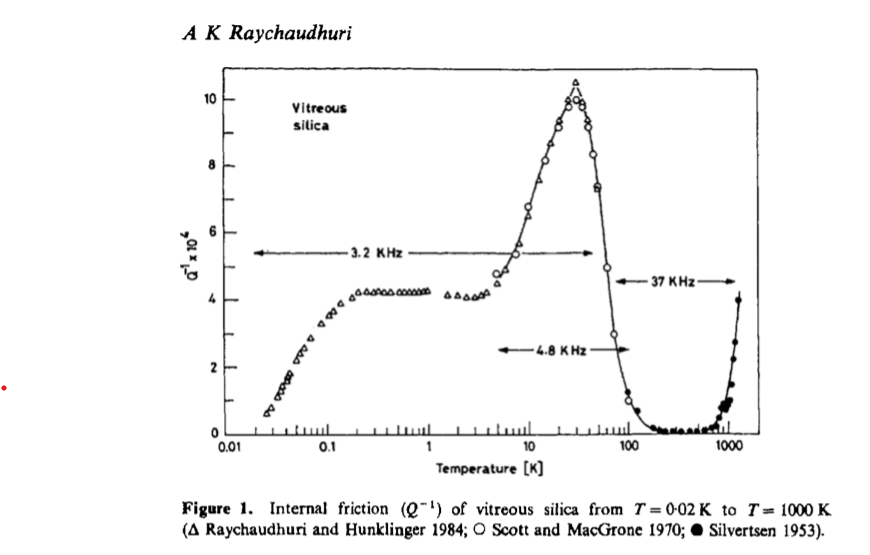below $T_G$ glass temperature
see Internal friction plot - 1986 Low temperature properties of glasses-unsolved problems - A K RAYCHAUDHURI

The key problem in the physics of glass is relaxation and the key question is what is relaxing. The problem, as pointed out earlier, is one of structure property correlation. What we mean by structure-property correlation may be qualified as follows. First, it is necessary to identify the parameters which may be said to represent a quantitative measure of the relaxation process. Second, these parameters should be linked with some bulk properties of the glassy system.
fractons, Diffusons, Locons, Propagons
Phonon-fracton anharmonic interactions: The thermal conductivity of amorphous materials
S. Alexander, Ora Entin-Wohlman, and R. Orbach
Phys. Rev. B 34, 2726 – Published 15 August 1986
However, in a-SiO2 our results indicate that locons contribute more than 10% to the total thermal conductivity from 400 K to 800 K
Since $95\%$ of the states in amorphous Si, and probably many other glasses as well, are diffusons, we should
understand their propertiesOur most important conclusion is that the “reincrease” of thermal conductivity above the plateau region is attributable to heat carried by “diffuson” modes in much the way imagined by Birch, Clark, and Kittel, and that the plateau is a simple crossover region, not requiring any new physics to explain. In particular, we believe that “excess modes” (also known as a “Boson peak”) is not a necessary ingredient to explain the plateau. Amorphous silicon seems to lack these “excess modes” but still to have a plateau.